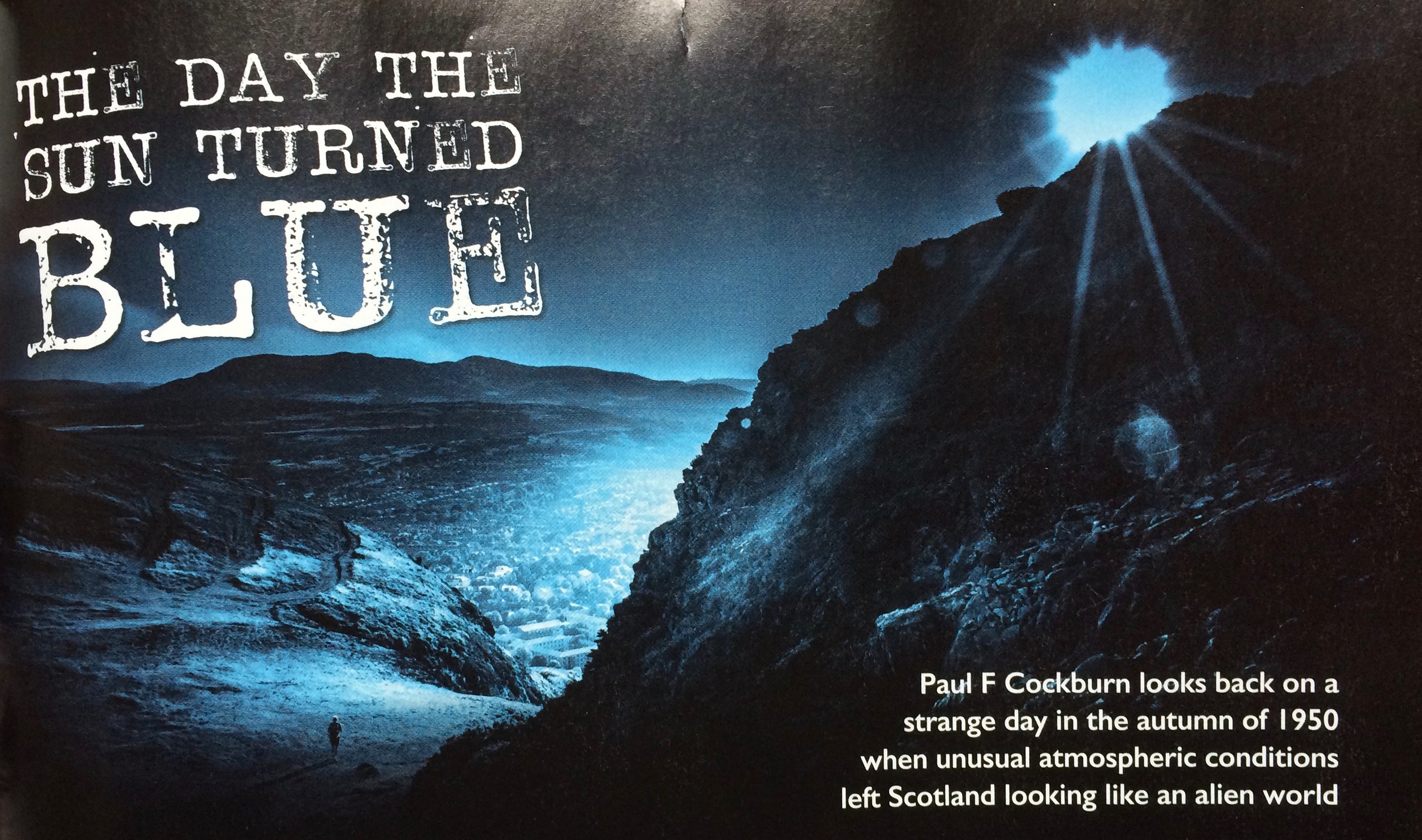
Nowadays, when something newsworthy happens, it feels as if everyone turns to Facebook, Twitter and other social media to comment on – or even find out about – what’s going on. Things were clearly different in 1950; back then, many Scots’ reaction to anything strange was apparently to call their local newspaper for (as one journalist later put it) “guidance, cheer and comfort”.
That’s why, from just after 4pm on Tuesday 26th September, 1950, phones in newsrooms across Scotland started ringing non-stop, with callers genuinely puzzled, intrigued and perhaps even slightly alarmed… by the Sun.
Now, 1950 had not been a particularly good “summer” in Scotland – a remorseless mixture of dullness and cold damp, according to some reports. Yet those callers weren’t phoning in about a sudden risk of sunburn under relatively cloud-free skies.
They were calling because the Sun had turned blue.
“It was totally bizarre,” remembers the science writer and science fiction author Duncan Lunan, who was just a few weeks shy of his fifth birthday when his granny took him down to Troon beach to see the spectacle. “The Sun was blue, the sky was bronze, and the whole familiar landscape of Troon beach was alien. I remember thinking to myself: ‘This is like being on another planet.’”
The change happened quickly too, with the sun shifting from slate-grey to pale blue within the space of a quarter of an hour. “All over Edinburgh, on the streets and in suburban districts, people stopped to gaze at the sapphire sphere shining in a greyish-white sky,” The Scotsman reported.
Some people – clearly those with little astronomical understanding – wondered if what they were looking at was the Sun at all. Was it not perhaps an unexpected day-time appearance for that proverbially rare Blue Moon?
Admittedly, not everyone thought of calling their favourite newspapers; cannier Edinburgh residents instead phoned the Observatory on the capital’s Blackford Hill. By the time a few journalists arrived there, duty astronomer Dr Baker was considering leaving the phone off the hook – if only so he and three astronomy students could concentrate on making scientific observations of the phenomenon.
As it turned out, the Blue Sun lasted less than two hours: by about 6:30pm, the Sun was essentially back to normal, although later observers noted that a genuine Blue Moon rose in the sky that evening.
While repeatedly pressed, Dr Baker of the Royal Observatory Edinburgh was reluctant – like any scientist without facts – to give visiting journalists any explanation for the Blue Sun, beyond suggesting the reason would likely prove to be meteorological (dealing with the atmosphere) rather than astronomical (concerning stars and planets).
As it turns out, he was bang on the button; later that day it was revealed that the pilot of a Meteor jet aircraft, flying out from the RAF station at Leuchars, had reported a brown haze layer at between 30,000 and 40,000 feet – below which the Sun had appeared blue, above which the Sun’s colour returned to normal.
Late in the evening, the Air Ministry Meteorological Office in London confirmed that the Blue Sun was likely “caused by the diffraction of light by dust particles of a certain size in a haze layer between six and eight miles high. It is possible that these dust particles originated from forest fires in North America and were carried across the Atlantic in strong upper air currents.”
Alternatively, everyone could have simply asked one Edinburgh resident who hadn’t been at all unsettled by this strange, remarkable phenomenon. Thanks to similar atmospheric conditions, he had already seen it happen before… in India.
First published in Scottish Memories, June 2016.